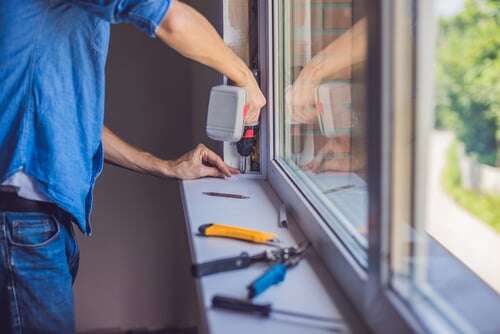 Admittedly, their size, length and bulk makes them look a little intimidating. And if you've ever bumped into them, it sounds as though they're rumbling in protest. Except for the ones that may be hidden from reach, the ducts in your attic, crawlspace and garage are actually quite approachable. And they probably stand to benefit from sealing and insulating, especially if:
Admittedly, their size, length and bulk makes them look a little intimidating. And if you've ever bumped into them, it sounds as though they're rumbling in protest. Except for the ones that may be hidden from reach, the ducts in your attic, crawlspace and garage are actually quite approachable. And they probably stand to benefit from sealing and insulating, especially if:
- Your utility bills are difficult to control
- A room or rooms in your home are drafty and/or difficult to heat
- The air in a room or rooms in your home is stuffy
While ducts are designed to deliver warm air to the rooms in your home via the furnace, the reality is that between 20 and 30 percent of that air may never arrive because it escapes through cracks, holes and loose connections. Such is the conclusion of the U.S. Department of Energy, and the only remedy is sealing and insulating. It makes for a productive weekend project, for you should realize four benefits right away:
- You will stem the presumed energy loss in your ducts
- You will reduce your utility bills
- You will enjoy better air quality in your home
While sealing and insulating ducts isn't difficult – in fact, it can even be an enjoyable maintenance project – keep in mind that a heating system repair compnay like Experts In Your Home is here to help you at any point you might need it.
Putting first things first, be sure you have the proper tools to tackle the job: mastic, foil, butyl or another heat-approved tape that features the Underwriters Laboratories (UL) logo. Do not use cloth-backed, rubber adhesive tape; it is not resilient. And despite its promising name, do not use duct tape, either. It has a short lifespan, especially as it responds to temperature changes.
You will apply the tape on most sections of the ducts as a patching agent. For the joints, you will need mastic sealant – which resembles putty – and R-6 duct insulation to wrap the ducts. All of these products can be found at home improvement stores.
Begin your DIY weekend project by identifying:
- Tape on the ducts that is loose, drooping or feels as dry as paper
- Holes and cracks, whose presence can be confirmed by holding a lighter against them while air is moving through the ducts
- Ducts that are dented or creased
- Ducts that are disconnected
- Ducts that have crumpled or collapsed
Once you have taped or replaced worn tape and patched the joints with sealant, you'll want to take the extra step of insulating your ducts – a task that will save you money on your utility bills all year long.
Most duct insulation is encased in plastic, so you don't have to guess which side should go against the duct. Also, neatness isn't necessarily the goal here; it's more important that the duct is completely covered in insulation.
First cut the insulation into 4- or 6-foot pieces so you can easily handle it. Then wrap the insulation around the duct, leaving a 4-inch overlap to make a seam. Then wrap the seam securely with foil tape.
In the course of this weekend job, you might find that some ducts are difficult for you to reach. Or you might notice that some ducts require additional reinforcement, which might call for sheet metal screws or metal or plastic bands. Some ducts might not be salvageable at all, which is normal as ducts age.
For these and any other stumbling blocks you encounter, remember that our Chico heating system repair technicians are here to not only reinforce your ducts but also your best efforts. Contact us today!
Are you properly maintaining your heating systen? Download our free checklist below!








